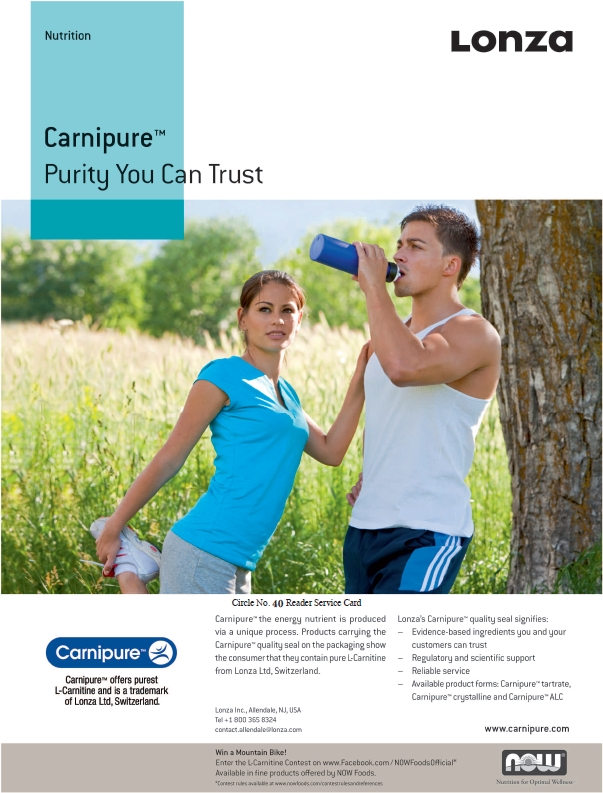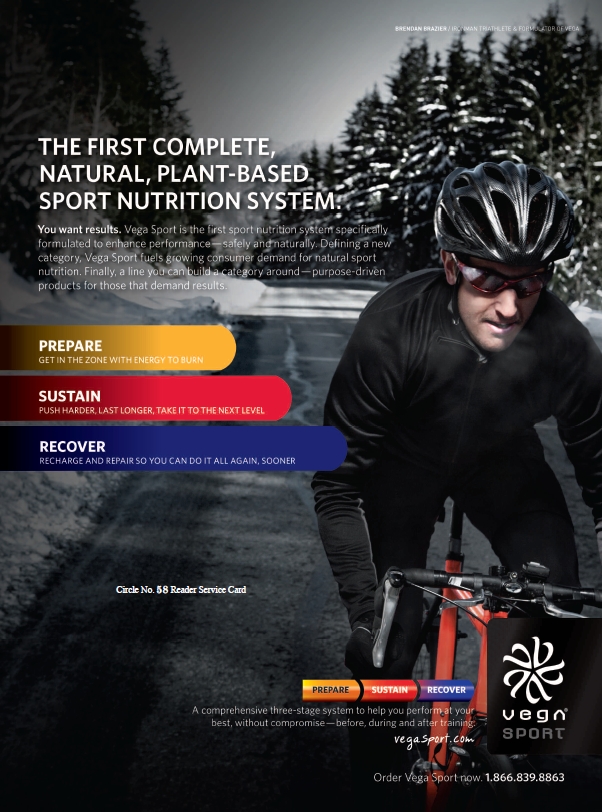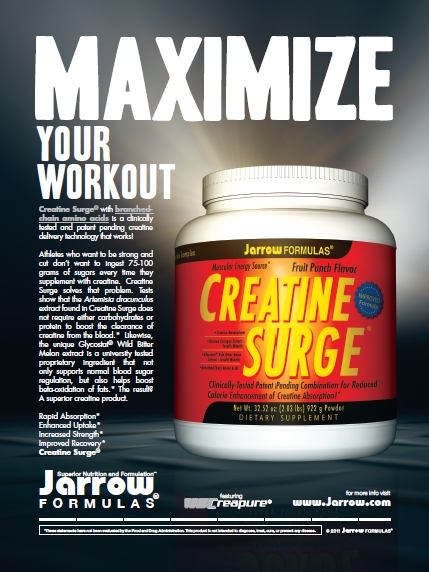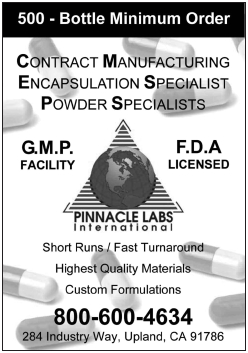Fitness and nutrition go hand in hand, so it is important that natural products retailers know which nutrients are necessary for customers that regularly exercise. Whether they are training for a marathon, bodybuilding, trying to lose weight or simply staying active, shoppers need certain nutrients to replenish their bodies and help them to perform. Here is a guide to some key supplements that will get the job done!
Energize
Many people need energy support when exercising regularly. Ribose is a mainstay for helping to support healthy energy levels. Ribose is a sugar made in the body, and is used to form purines and pyrimidines. The body needs to have enough purines and pyrimidines available to make important parts of cells like DNA, RNA and adenosine triphosphate (ATP), the “energy” of a cell (1). To  walk, run or even just breathe, your body must go to its stored ATP or create it from stored glucose and fats. Typically, people only have enough ATP stored in their muscles to last about three to five seconds of intense activity. This is equivalent to an intense sprint or weight-training set, explaining why exercisers get fatigued during their workouts. ATP can be found in many supplements, and other supplements like creatine, allow for the faster reproduction of ATP.
walk, run or even just breathe, your body must go to its stored ATP or create it from stored glucose and fats. Typically, people only have enough ATP stored in their muscles to last about three to five seconds of intense activity. This is equivalent to an intense sprint or weight-training set, explaining why exercisers get fatigued during their workouts. ATP can be found in many supplements, and other supplements like creatine, allow for the faster reproduction of ATP.
In supplement form, ribose is said to reduce energy loss during exercise and speed tissue recovery thanks in part to its ATP connection (1). This function could lead to improved athletic performance, reduced muscle cramping and less fatigue (2). In one study, recreational bodybuilders taking the supplement (10 grams daily) for a month experienced an increase in the amount of work they could perform, and thus muscle strength increased, too (3).
Electrolytes for people who regularly exercise, because they control fluid balance. Fluids can be depleted very quickly through perspiration, which can lead to dehydration. Electrolytes help control this process and also play a role in muscle function, energy production and heart function (4). Thus, taking supplemental electrolytes throughout physical activity is crucial for those who are pushing their bodies with vigorous exercise or who are spending a lot of time in the sun. Electrolytes also help prevent muscle cramps so athletes can press on in their workouts.
And, bitter orange, a thermogenic, is said to benefit athletes. In one study, participants taking a supplement containing the extract found exercise less strenous after consuming the product (15).
 Build It Up
Build It Up
People who frequently exercise or train are typically trying to build muscle. To build muscle, a person must consume enough protein, which makes up the living tissue of all plants and animals (5). Popular protein supplements include casein protein and whey protein.
Casein is the most abundant protein found in milk and milk products. It is slow acting, which means that levels of amino acids in the blood peak about two hours after consumption and remain that way for up to seven hours (6).
Whey is the second most abundant protein in milk. It is a complete protein, containing all 20 amino acids, and nutrients from whey are efficiently absorbed in the body. Unlike casein, it is fast-acting. Levels of amino acids in the bloodstream peak an hour after intake and return to normal after about three or four hours. Studies have shown that combining training with whey supplements is much more effective at increasing strength and muscle mass than diet or exercise alone (6).
Supplemental amino acids are also beneficial to those looking to build muscle. Amino acids are a group of nitrogen-containing, carbon-based organic compounds, and they are the building blocks from which protein and muscle are made (6). Amino acids can be broken down and converted into glucose, then into triglycerides and stored as body fat or released into the blood stream to be used as energy (7).
When we exercise for a long time, the body uses up proteins and branched chain amino acids (BCAAs) to compensate for insufficient energy sources. Replenishing BCAAs helps reduce muscle damage, support muscle strength and maintain stamina. Plus, replacing BCAAs after exercise helps muscles recover and prevents them from getting sore (8).
Creatine is another supplement that supports muscle building by improving strength and power during workouts. Creatine is produced naturally in the body from amino acids and is stored in the skeletal muscle. Though it can be obtained through foods like meat, you would have to eat a lot of them to equal the amount of creatine found in supplements. Creatine works by allowing ATP to be regenerated more quickly in the body. One study compared a group of women that trained while supplementing with creatine and a group of women that trained without creatine for 10 weeks. The results showed that strength was significantly greater in the group that took creatine in two and a half gram servings twice daily (7).
workouts. Creatine is produced naturally in the body from amino acids and is stored in the skeletal muscle. Though it can be obtained through foods like meat, you would have to eat a lot of them to equal the amount of creatine found in supplements. Creatine works by allowing ATP to be regenerated more quickly in the body. One study compared a group of women that trained while supplementing with creatine and a group of women that trained without creatine for 10 weeks. The results showed that strength was significantly greater in the group that took creatine in two and a half gram servings twice daily (7).
Muscle Recovery
With all of those energetic exercises and muscle-building sessions, your customers are going to need to rejuvenate their muscles. Exercise physiologist Malachy McHugh, Ph.D., has found that cherry juice can prevent and relieve muscle soreness and inflammation due to exercise (9). A study found that drinking cherry juice before and after a workout significantly lessened muscle pain and damage (10).
Pycnogenol, an herbal extract from the bark of the French maritime pine tree, has received attention for relieving the muscles after a workout. It is said to increase blood flow to the muscles, thus reducing cramping and helping the muscles to heal quicker (11).
GPLC, or glycine propionyl l-carnitine, is another supplement beneficial to athletes. GPLC maintains production of nitric oxide, which signals blood flow to go to the muscles, helping them to relax and improving their post-workout recovery. Aside from muscle relief, this supplement also helps the body burn fats for energy (12).
 A recent study on a branded melon extract (GliSODin from P.L. Thomas) indicated the ingredient reduced inflammation. This ingredient is naturally rich in the enzyme superoxide dismutase (SOD). Nineteen rowers were given the supplement for six weeks, and after training. “SOD activity was significantly higher (p = .0037) in the supplemented group at all measurement times, and post-exercise C-reactive protein was significantly lower (p = .00001) in athletes receiving GliSODin than those in the placebo group. In conclusion, supplementation with an extract rich in SOD activity promoted antioxidant status and protected against increased inflammation in the serum of professional rowers” (13).
A recent study on a branded melon extract (GliSODin from P.L. Thomas) indicated the ingredient reduced inflammation. This ingredient is naturally rich in the enzyme superoxide dismutase (SOD). Nineteen rowers were given the supplement for six weeks, and after training. “SOD activity was significantly higher (p = .0037) in the supplemented group at all measurement times, and post-exercise C-reactive protein was significantly lower (p = .00001) in athletes receiving GliSODin than those in the placebo group. In conclusion, supplementation with an extract rich in SOD activity promoted antioxidant status and protected against increased inflammation in the serum of professional rowers” (13).
Astaxanthin brings some of these same support mechanisms to the table. The supplement helps fight free radicals, may have a positive impact on athletic performance, and can help to relieve muscles post-workout by fighting inflammation (14). WF
References
1. Bioenergy, www.bioenergy.com, accessed July 15, 2011.
2. WebMD Online, “Ribose Uses, Side Effects, Interactions and Warnings,” www.webmd.com/vitamins-supplements/ingredientmono-827-RIBOSE.aspx?activeIngredientId=827, accessed Apr. 6, 2011.
3. D. Van Gammeren, et al., “The Effects of Four Weeks of Ribose Supplementation on Body Composition and Exercise Performance in Healthy, Young, Male Recreational Bodybuilders,” Curr. Therpeut. Res. 63 (8) 486–495 2002.
4. Elete, www.eletewater.com, accessed July 15, 2011.
5. K. Marshall, Basic Health Publications User's Guide to Protein and Amino Acids: Learn How Protein Foods and Their Building Blocks Can Improve Your Mood and Health (Laguna Beach, CA: Basic Health Publications, 2005).
6. E. Burke and D. Gastelu, Avery’s Sports Nutrition Almanac (Garden City Park, NY: Avery Pub. Group, 1999).
7. G. Ferraro and C. Steele, EAS Sports Nutrition Review, Golden, CO: Mile High Publishing, Inc., 2004.
8. Ajinomoto, “Sports and Amino Acids,” www.ajinomoto.com/amino/eng/sports_print.html, July 19, 2011.
9. R.A. Passwater, “Nutrition and Championship Sports Performance, Recovery and Injury Reduction: A Major Role for Cherry Juice Beyond Arthritis Relief,” WholeFoods Magazine Online, Oct. 2010, www.wholefoodsmagazine.com/columns/vitamin-connection/nutrition-and-championship-sports-performance-recovery-and-injury, accessed 4 Apr. 2011.
10. M. Hitti, “Cherry Juice May Cut Muscle Pain,” WebMD Online, Jun. 20, 2006, www.webmd.com/fitness-exercise/news/20060620/cherry-juice-may-cut-muscle-pain, accessed Apr. 13 2011.
11. L. Barclay, “Pycnogenol May Help Reduce Muscular Cramps and Pain,” Medscape Online, Jun. 20, 2007, www.medscape.org/viewarticle/537001, accessed Apr. 6, 2011.
12. R.A. Passwater, “High-Performance Nutrition for Athletes: An Update on the Role of GPLC (GlycoCarn) and Nitric Oxide,” WholeFoods Magazine Online, Mar. 2010, www.wholefoodsmagazine.com/columns/vitamin-connection/high-performance-nutrition-athletes-update-role-gplc-glycocarn-and-nitric, accessed Apr. 6 2011,
13. P.L. Thomas, “New Human Clinical Study Supports Use of Glisodin in Sports,” press release distributed July 12, 2011.
14. E. Watson, “Dr Oz and Oprah Effect Sends Astaxanthin Demand ‘Skyrocketing’, Claims Cyanotech,” Nutra Ingredients USA, Apr. 5, 2011, www.nutraingredients-usa.com/Industry/Dr-Oz-and-Oprah-effect-sends-astaxanthin-demand-skyrocketing-claims-Cyanotech, accessed Apr. 6, 2011.
15. C.A. Haller, et al., “Human Pharmacology of a Performance-Enhancing Dietary Supplement under Resting and Exercise Conditions,” Br. J. Clin. Pharmacol. 65 (6), 833-840 (2008).
Published in WholeFoods Magazine, September 2011









